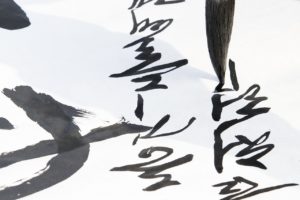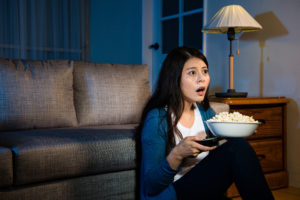Grammar is perhaps one of the most intimidating aspects of learning a foreign language. Sentence structures, conjugations, and linguistic rules can be hard to keep in mind. But it’s essential to learn if you want to speak like a local. So, if you want to become fluent in Korean, you’re going to need to master Korean grammar.
But don’t worry! There’s a right and a wrong way to learn basic Korean Grammar. And we’ll show you how to get the most out of your Korean grammar lessons without endless memorization, boring drilling, and pointless headaches.
Are Korean Grammar Rules Difficult to Learn?
The truth is that Korean is one of the easiest Asian languages to learn for English speakers. Although Korean ranks as one of the most difficult languages by the Foreign Service Institute (FSI), you’ll feel incredible ease when it comes to learning Korean grammar compared to other “difficult” foreign languages.
Unlike other Asian languages, Korean is not a tonal language. So, Korean pronunciation will be easier to master. And the Korean writing system seems scarily different from English. But understanding the Korean alphabet (also known as Hangul) is fairly easy. It’s a highly logical writing system, so learning Hangul takes less than an hour.
Learning Hangul is a great place to start when you’re learning Korean. (So, you’ll want to give that a go before you try to learn basic Korean grammar.) But don’t worry, once you master Hangul and learn how to construct basic words, you can move on to constructing more complicated sentences. If you’ve already mastered the Korean writing system, then continue on and see how easy Korean grammar is to learn.
Korean Sentence Structure Basics
Pretty much every language strings words together to form sentences. And every sentence (for the most part) consists of at least three components:
- Subject (S): what the sentence is about.
- Verb (V): what the subject does.
- Object (O): what the subject is interacting with.
Now, some sentences combine all three components into 1 or 2 words while implying other components. And still, other sentences consist of multiple words and phrases that fit into these categories. But on the whole, you’ll need these three parts to convey meaning.
When we say a language is SVO, we mean that sentences tend to occur in that specific order: Subject, then a verb, then an object. An example of this in English would be:
Mary eats an apple.
“Mary” is the subject because the sentence is about her. The verb is “eats” as it describes Mary’s action. The object is “food” because it explains the focus of Mary’s action.
We call this sentence structure Subject-Verb-Object or S-V-O.
Not every language follows this order. But the components are there in each sentence to some degree. There are plenty of languages that don’t follow SVO conventions.
Is Korean Subject-Verb-Object (SVO)?
Simple sentences, such as “I ran”, “you sneezed”, or “mother comes” have the same sentence structure in both English and Korean: subject + verb. However, when you add an object, there’s a big difference between the two language’s sentence structures. While English is an SVO language, Korean has SOV (Subject-Object-Verb) structures.
This means that the verb always comes last when you’re speaking Korean. That’s where the common Korean joke comes from: “Always listen to everything a Korean person says because you’ll only find out at the end what they’re talking about”.

Examples of English vs Korean Grammar Rules
To understand the difference more, here’s a comparison between Korean and English sentence structures.
English |
Korean counterpart |
I have a pen. |
I pen have. |
I have an apple. |
I apple have. |
She gave me a pie. |
She pie gave me. |
If this is confusing for you, don’t worry. There’s a simple trick you can use to easily construct Korean sentences: always end your sentences with a verb or an adjective.
Basic Particles in Korean Grammar
Particles are a foreign concept to English native speakers. There are 20 particles in the Korean language and none of them translate to English. Linguistically, they can be compared to suffixes or postpositions best. These syllables in basic Korean grammar denote a word’s role within a sentence. The difference between them depends on what category the noun they’re attached to belongs to. Adding these at the end of words correctly can make you sound fluent.
Commonly Used Particles in Korean Grammar:
는 [neun] or 은 [eun]
These indicate the topic of the sentence. You place this particle right after the subject. If the subject ends with a vowel, then you use [neun] (e.g. naneun). If the subject ends with a consonant, then you use [eun] (e.g. dangsin-eun).
를 [leul] or 을 [eul]
를 [leul] or 을 [eul] signifies that a word is the object of the sentence. You use “Leul” when the last syllable ends with a vowel. And you use “Eul” when the last syllable ends with a consonant.
에[e]
You attach “e” to a verb to indicate something is done in a specific time or place. You can also translate the word into English as a preposition in sentences. For example ‘I went jogging at 4 am’ or ‘She has jumped in the pool’.
Understanding the logic of particles and using them correctly can take some time. This video goes into further detail about the usage of the syllables:
Conjugating Verbs in Korean
Verb conjugation in Korean depends on the context the verb is in. There are three main factors that influence how a verb is spelled:
- Tense
- Level of politeness
- Whether it ends in a vowel or consonant
However, the base of the verb never changes. In English, the verb “try” becomes “tried” in the past tense. The base of the verb changed. In Korean, if you want to change the tense or the politeness of a verb, you add a different thing at the end.
You also don’t have to worry about the Korean particle changing when you’re conjugating verbs. There is also no gender or plural form for verbs in Korean, which makes conjugation a lot easier.
Here’s an example with the verb “sada” that means to sell in Korean:
- Korean: Sada -> Sayo -> Sa-sseo-yo
- English: Buy -> Buying -> Bought
Every Korean verb finishes with [da] in its most basic form. This is only used in the dictionary. If the verb is currently happening, then you use the word [ayo]. And when the action happened in the past, you use the word [sseo-yo].
Here’s a table of conjugation in different tenses for three important Korean verbs:
English |
Korean Verb |
Past – Present – Future (for formal lowering) |
To be |
이다 |
이었다 – 인다 – 일 거다 |
to have |
가지다 |
가졌다 – 가진다 – 가질 거다 |
to do |
하다 |
했다 – 한다 – 할 거다 |
Conjugating Negative Verbs in Korean
Making a positive sentence into negative is much easier than regular conjugation. It’s important to note that the following rules don’t apply to 있다 (itda) – to have. (The negative form of 있다 (itda) is 없다 (eopda) – to not have).
There are two ways you can turn a sentence into negative:
- Add 안 (an) at the beginning of the verb:
- 오늘 수업을 안들어요 (oneul sueobeul andeureoyo) = I don’t have a class today
- Add ~지 않다 (~ji anta) to the stem of the verb:
- 오늘 수업을 듣지 않아요 (oneul sueobeul deutji anayo)
Although their meaning is the same, you use them in different situations. With plenty of practice, you’ll naturally acquire which situation fits which negative verb conjugation form.
Adjectives in Korean Grammar
The Korean language doesn’t have adjectives. Instead, they have descriptive verbs. To describe a noun like an adjective would in English, you need to conjugate the descriptive verb to fit the context.
For example, a descriptive verb for the adjective “small” would be: 작다 “to be small”. As you can see, it ends with 다 [da], therefore it’s a descriptive verb. To create and adjective, you have to connect the descriptive verb to the noun. You do this by replacing 다 [da] with either ㄴ / 은. You use ㄴ [nieun] if the verb ends in a vowel, and 은 [eun] if it ends in a consonant.
- 작다 small + 말 horse = 작은말 a small horse
- 예쁘다 pretty + 친구 friend = 예쁜 친구 a pretty friend
This video can show you visually how to conjugate descriptive verbs into adjectives:
Honorifics in Korean Grammar
Showing respect is extremely important in Korean culture. It’s no wonder this also affects Korean grammar. There are three levels of Korean politeness:
- Formal: For people older than you, or of higher social status
- Standard: For most everyday speech
- Informal: For friends and family
As a foreign language learner, you should learn standard and a bit of formal to get by. Although there won’t be great pressure on you to uphold the Korean hierarchy, you should still respect it. After all, the last thing you want to do is offend someone.
Honorifics in Korean belongs in the formal speech category. However, they show an even higher level of respect. It’s commonly used by customers of stores or restaurants and army officers.

How to Practice Korean Grammar
The only way to master Korean grammar is to practice it. Once you understand the logic of the language, you need to apply it. Use these Korean grammar rules to create sentences, and communicate fluently in Korean. There are plenty of ways you can put your Korean grammar knowledge to the test.
Here are a few ideas that can get you speaking and writing in Korean fast:
- Buy an exercise book: This old language learning method can be quite useful. If you want to enhance your written Korean skills, premade writing exercises can help you master Hangul and sentence structures.
- Get a penpal: There’s no better lesson than jumping in the deep end. With a Korean penpal, you can exchange emails, texts, or even physical letters to practice your Korean. They can correct your grammar, and give you pointers. And you can even make an international friend.
- Download a language learning app: Having your Korean lessons in your pocket is incredibly convenient. Enhance your vocabulary and practice your grammar with one platform. Just make sure you don’t use an app that relies on typing. The best language learning apps get you to speak the language.
- Have a conversation: A language is a communication tool. And the best way to practice your Korean grammar is to create sentences instantly. Try having a complete conversation with a Korean native. They can listen and correct you if need be. If you’re looking for a conversation partner, you can always look at HelloTalk, Tandem, iTalki, and other similar sites.
Learn Korean Grammar with the Best Methods
While this post goes into detail about basic Korean grammar rules, it barely scratches the surface. Korean is a wonderful and rich language and learning it has many great benefits. As you can see now, even its grammar is understandable. Once you’re through this obstacle, Korean fluency is just a hop, skip, and a jump away. And you’ll get there even faster with OptiLingo!
Based on research-based methods, this language learning app combines the most effective teaching theories into one. Featuring spaced repetition and comprehensible input, you’ll understand all the material, and commit it to memory effectively. OptiLingo gives you high-frequency words and phrases, so you’ll learn how the locals speak.
Discover how effective OptiLingo is. Try FREE today!







